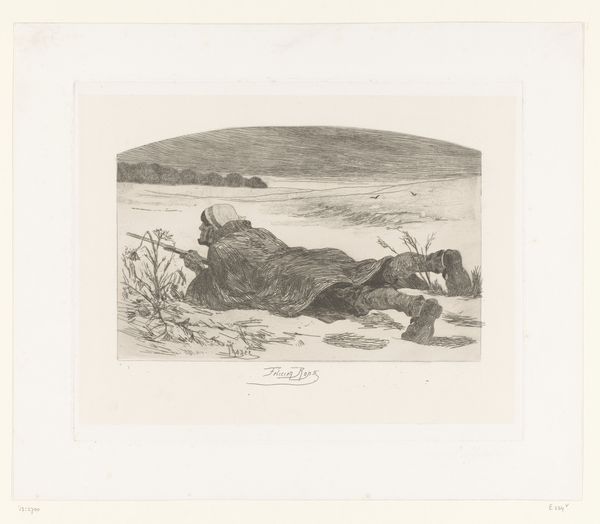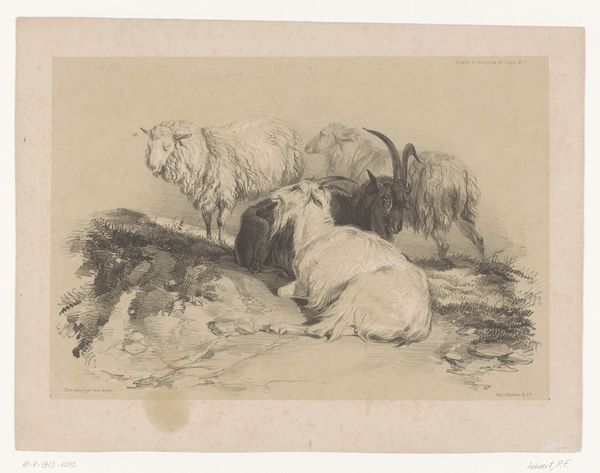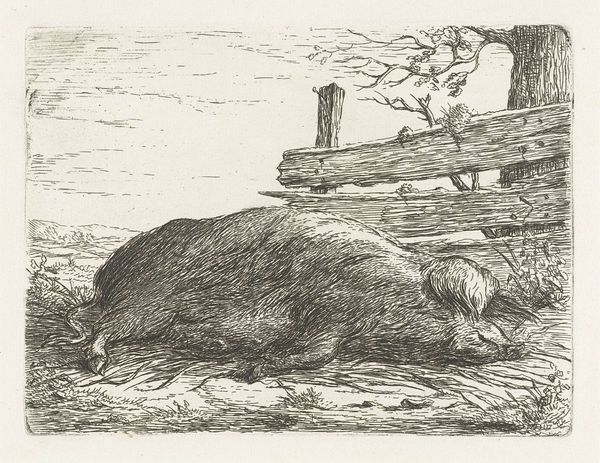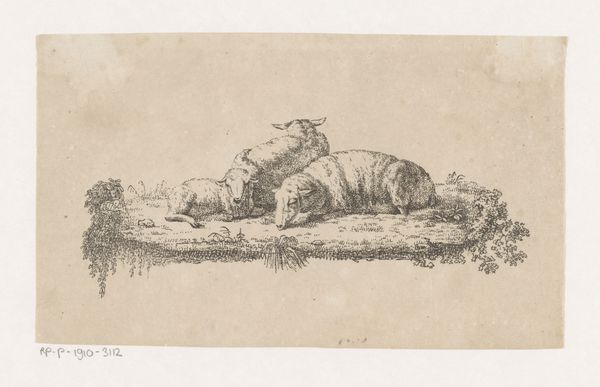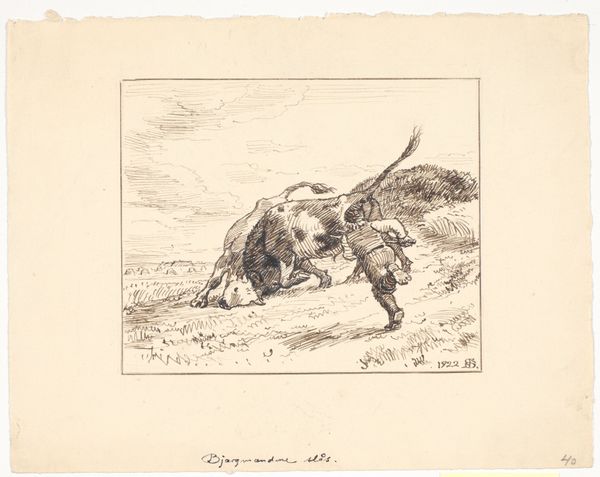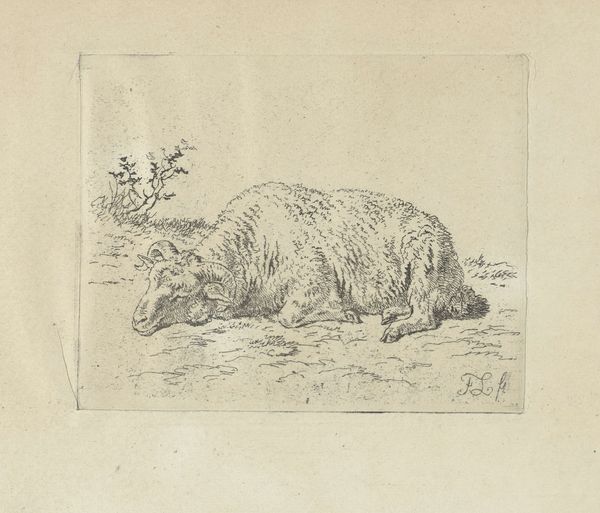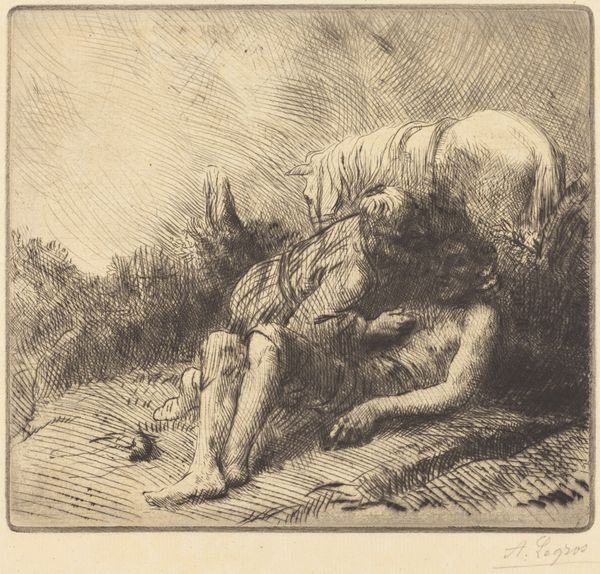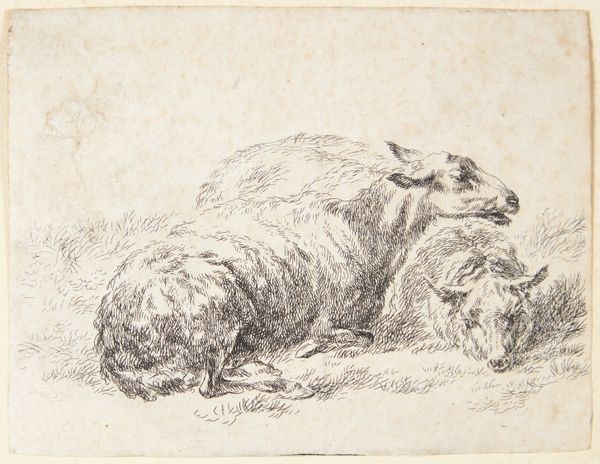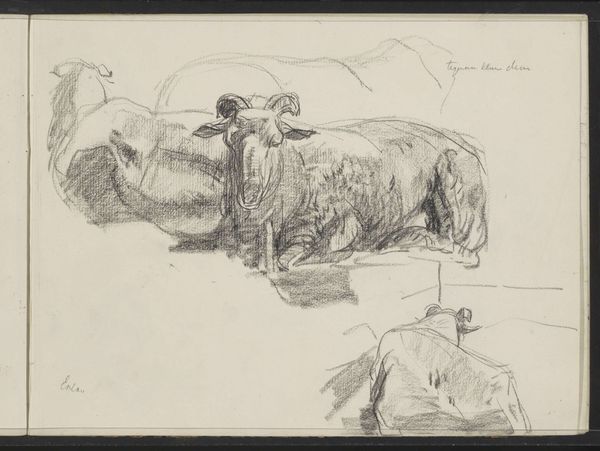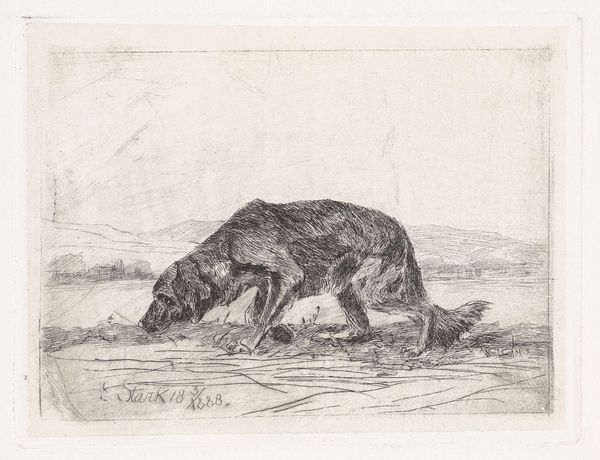
drawing, print, paper, ink, pen
#
drawing
# print
#
pencil sketch
#
landscape
#
figuration
#
paper
#
ink
#
pen
#
realism
Dimensions: 177 × 237 mm
Copyright: Public Domain
Editor: This drawing, "Russian Bear" by Auguste André Lancon, uses ink and pen on paper. I'm really struck by the contrast between the dense, detailed rendering of the bear's fur and the sparser background. How do you see this work? Curator: From a materialist perspective, consider the relationship between labor and the final product. Lancon's choice of ink and pen, readily available materials, speaks to the accessibility of art production. It prompts the question: who had access to these materials and the skill to depict such a subject, and what were the socio-political contexts influencing the choice of subject matter? Editor: That's interesting. So you're saying the choice of medium isn't just about aesthetics, but also reflects the artist's position within a system of production? Curator: Precisely. The drawing’s realism, achieved through simple materials, almost democratizes the art-making process. Yet, the "Russian Bear" itself signifies power and wilderness. Does the act of drawing, a form of "capturing" the bear on paper, mirror broader societal relationships to nature and power during that time? Editor: So, thinking about the pen and ink, the materials, makes you consider what political messages might be layered in the work. I was only really considering what the image looked like. Curator: Yes. The image looks serene; it's about a wild beast relaxing, or perhaps dying. How do the readily available materials and labor invested in creating this detailed image shape its reception and understanding? Was it made for scientific illustration or for entertainment and how would the labor required be valued differently within these distinct networks of material culture? Editor: I see, understanding the "how" helps us understand the "why" and perhaps for whom, the art was created, shifting our focus to systems, rather than pure admiration. Thank you. Curator: Indeed, by understanding the conditions of its making, we gain a deeper appreciation for the work's complex cultural and economic underpinnings.
Comments
No comments
Be the first to comment and join the conversation on the ultimate creative platform.
